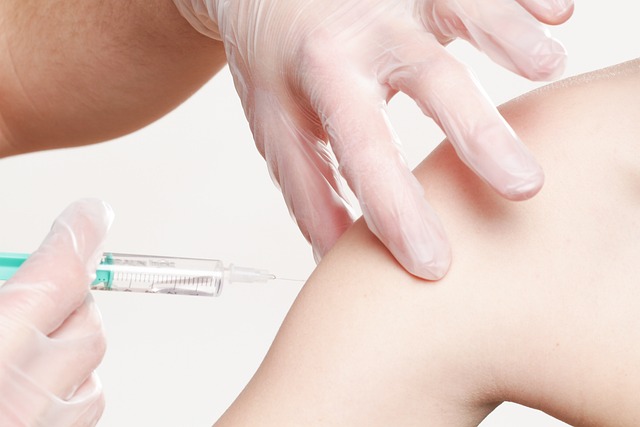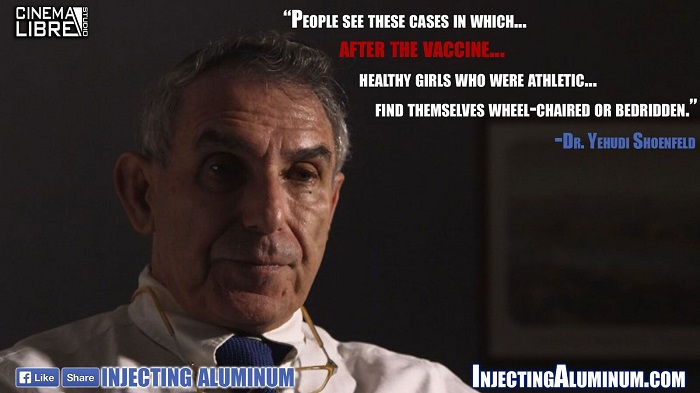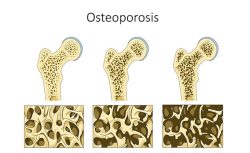In a recent article published in the British Medical Journal, Crowcroft et al (2015) suggest we need a new approach to vaccine recommendations. Focusing mainly on the economic and ethical considerations involved in public policy surrounding vaccine programs and vaccine approval the authors write:
“We are on a steep trajectory away from an era of inexpensive vaccines for diseases that are widespread in the absence of immunisation… Technologies such as searching genetic codes for possible antigens and the development of new adjuvants to stimulate immune responses also bring considerable uncertainty about safety and effectiveness.”
“…some sections of society are less likely to vaccinate themselves or their children. Those who hesitate to vaccinate are often highly educated, well resourced, and demand respect for their perspectives.”
Though speaking specifically about a ‘novel vaccine’ for serogroup B meningococcal disease, Bexsero (Novartis, Basel), the issues and problems of vaccine safety and approval apply to all vaccines. Arguably, more important than the economic risk to benefit models used by healthcare policy analysts to calculate the health costs for vaccines are the very real questions associated with safety and efficacy. Those concerns neither make it to same cost/benefit calculations, inasmuch as the actual costs associated with mitigating adverse reactions are not included, nor do they appear paramount to policy makers or ethicists. The preference instead is to assume that risks of adverse reactions and ineffective vaccines are minimal compared the risks associated with the diseases vaccines purport to protect against. I would suggest that efficacy and safety are central to any risk/benefit calculation and ensuing policy decision. For without those data, neither the economic costs nor the human costs of said policy decision can be accurately assessed.
Vaccine Safety and Efficacy
If we look at the historical data, across multiple vaccines, a pattern emerges that is quite distinct from the models proposed by many healthcare agencies and governmental institutions.
Crawcroft and Britto (2002) called whooping cough a continuing problem, which has re-merged in countries with high vaccination coverage [with inexpensive vaccines] and low mortality. Then they contradicted themselves. “Pertussis has re-emerged…because of low coverage after a vaccine scare in the 1980s (in the United Kingdom) or the use of vaccines with poor efficacy (Canada, Sweden).”
“Germany stopped their vaccination programmes completely and only reinstated vaccination for pertussis after years of recurrent epidemics of whooping cough.” However, according to Miller and Farrington (1988), “In West Germany, unlike the UK, there are no national statistics on pertussis incidence, no national vaccination policy and no figures for vaccine uptake. Local studies have shown that vaccination rates are low and that pertussis is prevalent particularly in 2-4 year age-group, which is typical of a country with low uptake, similarly serotype 2 predominates.”
Whooping cough vaccine was introduced in the UK during the 1960s and national statistics on uptake rates are available from 1961.
“Mortality data show that death from whooping cough declined before ‘the disease was reduced by vaccination’”.
Are there any Diseases Reduced by Vaccination?
Starting with smallpox vaccines, continuing through typhoid, diphtheria and later on DPT and other vaccines, the highest incidence of targeted diseases occurred in the vaccinated. Famously, the Leicester citizens’ boycott of smallpox vaccine stopped smallpox epidemics in their city. Outbreaks of typhoid in the army occurred right after mass vaccination (Wright 1901). A huge diphtheria outbreak in the vaccinated in the 1940s in Nazi Germany and in the Nazi occupied countries. A documented 300% increase in the incidence of whooping cough starting in the 2-months old DPT recipients in the USA in mid seventies (Hutchins et al 1988).
The US outbreaks of measles in even 100% vaccinated populations started in 1963 with the licensure and mass use (Sencer et al. 1967) of the measles vaccines. The destruction of transplacentally-transmitted immunity (Mulholland 1995) predicted by vaccine researchers early in the piece, resulted in pertussis and measles occurring in newborn babies in all countries with high vaccination compliance. Outbreaks of provocation paralysis (infantile paralysis) provoked by all vaccinations) (McCloskey 1950) are well-documented.
Natural infectious diseases of childhood (both mortality and morbidity) were on the downward trajectory 50 years before any vaccines were administered in mass proportions. The main reasons were better nutrition (especially better vitamin C status), sanitation, clean water and uncrowded living conditions. Generational immunity acquired by repeated exposure and inherited and acquired natural immunity cannot be overlooked, either.
The largely unvaccinated Amish (claiming religious exemption) had not reported a single case of measles between 1970 and December 1987, for 18 years (Sutter et all 1991), while the well-vaccinated non-Amish communities experienced regular 2-3 year epidemics in even 100% vaccinated populations. Pro-vaccinators claimed success and set a date for measles eradication (1 October 1982). Instead, large measles outbreaks occurred in the vaccinated non-Amish, starting in 1982, and on 5 December 1987 in the Amish. The situation simply confirmed Hedrich’s (1933) evaluation of measles epidemic cycles (2-3, 11, and even 18 years).
Pertussis followed similar dynamics motivating pro-vaccinators to claim success with early pertussis vaccination. However, it did not take long and pertussis outbreaks in fully vaccinated populations followed mass vaccination drives. Instead of abandoning the obviously ineffective vaccination, the culture of “lies, damn lies and statistics” set in.
Sweden discontinued pertussis vaccine use for 11 years in 1979; whooping cough became a mild disease and stopped occurring in babies and young children below one year of age (Isacson et al. 1993). Very few doses of pertussis vaccine were administered, however, even those few recipients developed pertussis (one in 3). 372 (61%) of the 377 parents interviewed, reported clinical pertussis in their unvaccinated children (confirming Hedrich’s (1933) concept of herd immunity).
When Sweden resumed pertussis vaccination (with acellular vaccine) in mid 1990s, not only the incidence went up, but the babies under the age of one contracted the disease already during the trials of acellular vaccine straight after the first dose of the vaccine (Olin 1995). The trial was discontinued before the expected termination date. Epidemics in the vaccinated have continued.
Japan moved the DPT & P vaccination age to two years in mid seventies with similar effect as observed in Sweden, including a substantial fall in the overall infant mortality (from 17th to the first, lowest infant mortality rate in the world (Jenny Scott 1990).
The UK experienced similar dynamics, also in mid seventies. After the first media report of brain damage linked to DPT vaccine the UK parent’s compliance fell down to 30% or even 10%), but according to Fine and Clarkson (1982), paradoxically, the inter-epidemic period did not decrease after the 1974 fall in vaccine uptake.
Pertussis incidence and hospital admissions fell markedly and so did the overall infant mortality. Macfarlane (1982) wrote, ”The postneonatal mortality fell markedly in 1976, a year on which a sharp decline in neonatal mortality rate began. Between 1976 and 1979, however, neither the late neonatal nor the post-neonatal mortality rates fell any further. Indeed, the post-neonatal mortality rate increased slightly among babies born in 1977. Obviously, when the compliance started climbing, so did the infant mortality rates in England and Wales and Glasgow. Epidemics in the vaccinated followed.
Preston (1994) analyzed the pertussis situation and wrote, ”In the mid-1970s, the general public and many health care professionals in Britain lost faith in the safety of whole-cell pertussis vaccine. This reaction (largely in response to fears about vaccine-induced brain damage) was unjustified, and caused vaccine uptake in infants to plunge from 80% to 30%.” Preston compared this with the situation in Massachusetts and wrote, “An apparent increase in incidence in 1989-91 was largely due to wider surveillance and the introduction of serologic diagnosis for adolescents with not less than 1 week of paroxysmal coughing…” “Stott and Davis suggested that, in the absence of a positive culture, the term “pseudo-whooping cough” is appropriate for paroxysmal cough of less than 3 weeks duration. Although the authors of the Massachusetts report express concern about the diagnosis of pertussis in fully vaccinated children, they do not tell us how many of these children had positive cultures, culture positivity being the only reliable laboratory test.
Cincinnati likewise experienced a resurgence of pertussis in 1993, with 223 culture-positive cases. Although 82% of diagnosed “cases” between 6 months and 6 years of age had received at least three doses of (Connaught and Lederle) vaccine, the criteria for clinical diagnosis are not stated, nor are we told the number of culture-positive cases in this age group…Both consider panic measures, such as neonatal vaccination, immunisation of pregnant women and boosting with acellular vaccine.” And, we are told “The vaccine cannot be expected to protect against pseudo whooping cough. Nevertheless, there are several good reasons for genuine failure of pertussis vaccination.”
Early Vaccination and Later Disease
In all countries with national vaccination programs, the distribution of all vaccine-preventable disease experienced deranged age distribution. The present situation is that in all developed countries with high vaccination compliance epidemics of pertussis, measles, mumps, etc. occur with increased frequency and magnitude, and, in the vaccinated.
Medical researchers documented waning vaccine ‘immunity’, changes in the serogroup, polymorphism and mutations of the causative organisms (directly linked to vaccines in a similar fashion as experienced with antibiotics and other antibacterials and antivirals) (Cassiday et al. 2000; Octavia et al. 2011; Mooi et al. 2014).
Medical research provides important scientific evidence against continued use of vaccines, which is an outdated, ineffective and unsafe technology. Moreover, the evidence of the benefits of natural infectious diseases in providing a life-long specific and non-specific immunity has also been mounting.
References
- Crawcroft et al. 2015. Do we need a new approach to making vaccine recommendations? BMJ; 30 January: 350; h308:1-6 (Analysis).
- Crawcroft and Britto. 2002. Whooping cough – a continuing problem. BMJ; 325. 29 June : 1537-1538 (editorial).
- Miller and Farrington. 1988. The current epidemiology of pertussis in the developed world: UK and West Germany. Tokai J Exp Clin Med; 13 Suppl): 97-101.
- Wright 1901. On the changes affected by anti-typhoid inoculation in the bactericidal power of the blood; with remarks on the probable significance of these changes. Lancet; Sep 14: 715-723.
- Hutchins et al. 1988. Current epidemiology of pertussis in the United States. Tokai j Clin Med; 13(Suppl): 103-109.
- Sencer et al. 1967. Epidemiologic basis for eradication of measles in 1967. Pub Health Reports; 82(3): 253-256.
- Mulholland 1995. Measles and pertussis in developing countries with good vaccine coverage. Lancet; 345. Febr 4: 305-307.
- McCloskey, 1950, The relation of prophylactic inoculations to the inset of poliomyelitis. Lancer. April 18: 659-663.
- Sutter et al. 1991. Measles among the Amish: a comparative study of measles severity in primary and secondary cases in households. J Infect Dis; 163: 12-16.
- Hedrich 1933. Monthly estimates of the child population “susceptible” to measles, 1900-1930, Baltimore, MD. Am J Hygiene: 613-635.
- Isacson et al. 1993. How common is whooping cough in a non vaccinating country? Ped infec Dis J; 12(4): 284-288.
- Olin 1995. Acellular pertussis vaccines – a question of efficacy. J of Hospital Infections; 30 (Suppl): 503-507.
- Jenny Scott 1990. US slips in infant mortality. National Commission to prevent infant mortality.
- Fine and Clarkson 1982. The recurrence of whooping cough: possible implications for assessment of vaccine efficacy. Lancet; March 20: 666-668.
- Macfarlane 1982. Infant deaths after four weeks. Lancet; October 23: 9290939.
- Preston 1994. Pertussis vaccination: neither panic nor complacency. Lancet; 344, August 20: 491-492.
- Stott and Davis. 1981. Pertussis vaccination and pseudo-whooping cough. BMJ; 282,June 6: 1871.
- Cassiday et al. 2000. Polymorphism in Bordetella pertussis pertactin and pertussus toxin virulence factors in the United States, 1935-1999). J Infect Dis; 182: 1402-1408.
- Octavia et al. 2011. Insight into evolution of Bordetella pertussis from comparative genomic analyses: evidence of vaccine-driven selection. Mol Biol Evol; Jan 10; 28(1): 707-715.
- Mooi et al. 2014. Pertussis resurgence: waning immunity and pathogen adaptation – two side of the same coin. Epidemiol Infect. Feb 13; 142(4): 685-694.
We Need Your Help
Hormones Matter needs funding now. Our research funding was cut recently and because of our commitment to independent health research and journalism unbiased by commercial interests we allow minimal advertising on the site. That means all funding must come from you, our readers. Don’t let Hormones Matter die.
Yes, I’d like to support Hormones Matter.
Image by Angelo Esslinger from Pixabay.
This article was published originally on Hormones Matter on March 19, 2015.















